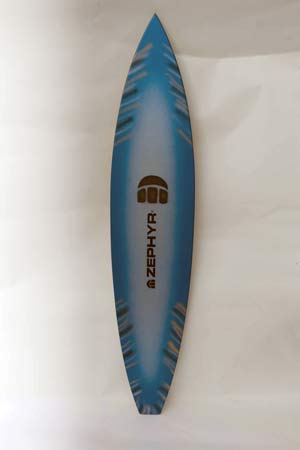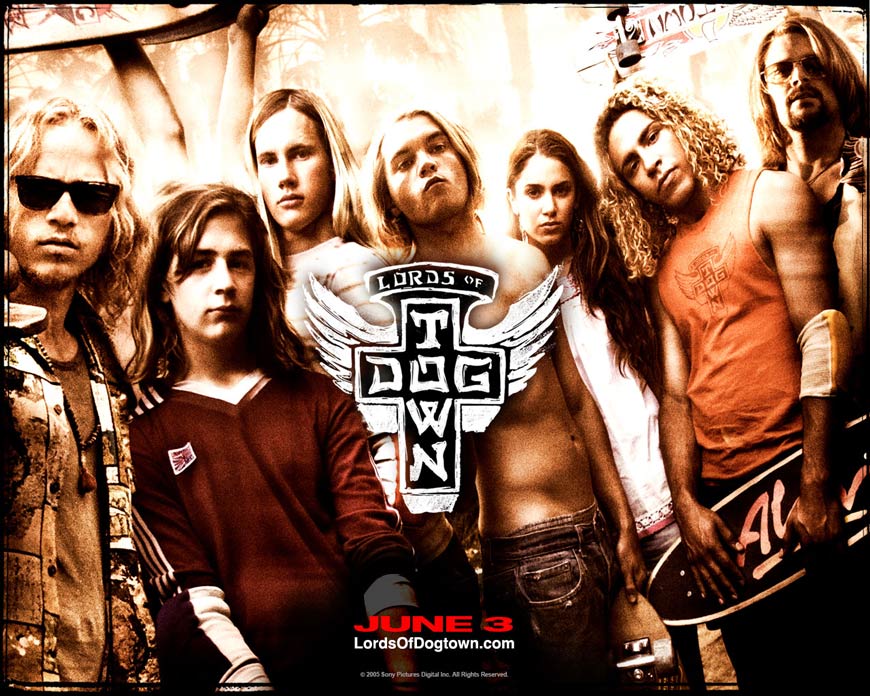
Jeff Ho was the first person I interviewed and Lucia Griggi photographed for this book. This was way back in the spring of 2009, when I was working on a couple of other books and was too frazzled to be doing anything right.
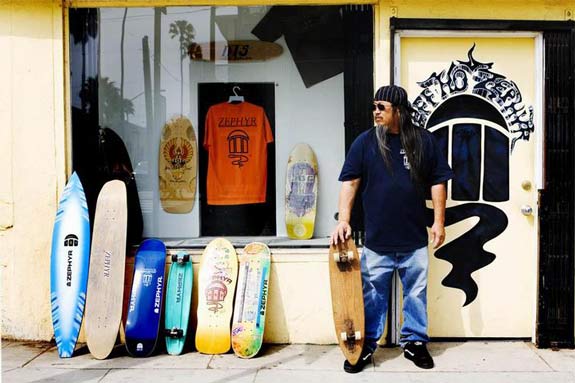 Okay we got ahead of ourselves. Let me go back and ask some foundation questions. Did you start skating first or did you start surfing first?
Okay we got ahead of ourselves. Let me go back and ask some foundation questions. Did you start skating first or did you start surfing first?
I started skating first.
What year?
In the Fifties. I was a metal wheel guy. And that one board you have a photo of was for the mid-sixties. I used to skate Revere with that. So when they talk about skating the banks, and surf/skate emulation, you know, we were doing that back in the Sixties. But we didn’t have the urethane wheels. Now when the urethane wheel came out, that gave you so much grip and made the ride so much smoother you could run over stuff easier and faster.
Faster.
And faster.
A lot more fun.
Well yeah it was like the grip. You still had the same loose ball bearings but that wheel gave you the extra grip that you needed to start turning quicker and do maneuvers and not slide out. With clay, chunks of the wheel would fall off, or you would hit like a little pebble and stop. But with the urethane wheels you could roll over that stuff and it gave you an advantage.
World of difference.
A World of difference.
Okay I started to write a long caption for you but it sucks and sounds like Wikipedia. Let me read that to you and you can breathe some life into it.
Go.
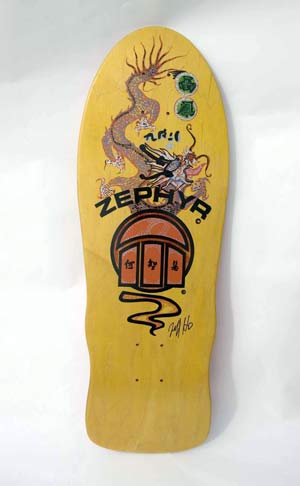 In 1973 Jeff Ho, Skip Engblom and Craig Stecyk opened the shop, “Jeff Ho Surfboards and Zephyr Productions,” on Main Street in Santa Monica.
In 1973 Jeff Ho, Skip Engblom and Craig Stecyk opened the shop, “Jeff Ho Surfboards and Zephyr Productions,” on Main Street in Santa Monica.
See the part I have problems with is Skip Engblom and Craig Stecyk. Stecyk is cool but Skip should have no credit.
Okay.
Go on…
In 1975 the young surf team members asked Ho and Engblom to start a skate team separate from the surf team. Cahill, Pratt, Adams, Sarlo, Peralta and Alva were the founding members.
They didn’t ask me to start the skate team, I just started it. I have to give you some backstory.
That is what I need.
Okay this is the real story. I bought the shop. It was my money. I financed it. Those guys want to take credit for it. That’s not right. And they’ve done it and all the articles, all the movies, all that crap. Everybody is taking credit for stuff that I did, and it doesn’t sit right with me. It was my money. I started the shop. I actually bought the shop from – what’s his name – Phil Castagnola. Because it was Select Surf Shop and I used to sell his boards out of the shop. Before I met Craig, before I met Skip, before I met any of those guys I used to work out of this shop and sell boards to Select. I bought the shop from Castagnola. I was on my way out… to Hawaii.
When was this, what year?
I can’t remember, but it was early 70s – ’71 or 72.
Why were you headed for Hawaii? For better waves?
No I was going to buy a piece of land. I had money to buy land and it was like five grand for an acre. And I was just going to go over there…
Oahu, or..
Either Oahu or the Big Island, it didn’t matter. I was just going to get myself some land.
Are you from Hawaii originally?
No I’m from California. From the Santa Monica, LA, Venice, Culver City area = West LA. I’ve surfed on and off at these beaches since I was a kid. A very very young kid.
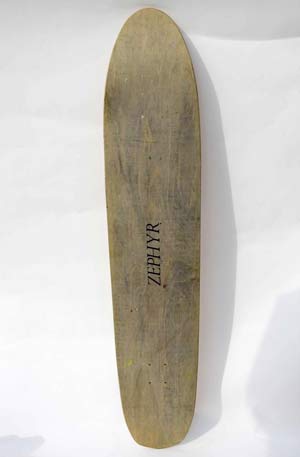 So it was you that started Jeff Ho Surfboards and Zephyr Productions and it was you that started the skateboard team.· Then it reads: “Cahill, Pratt, Adams, Sarlo, Peralta and Alva were the founding members. Soon after, the team grew with the addition of local skaters Bob Biniak, Paul Constantineau, Jim Muir, Peggy Oki, Shogo Kubo and Wentzle Ruml.
So it was you that started Jeff Ho Surfboards and Zephyr Productions and it was you that started the skateboard team.· Then it reads: “Cahill, Pratt, Adams, Sarlo, Peralta and Alva were the founding members. Soon after, the team grew with the addition of local skaters Bob Biniak, Paul Constantineau, Jim Muir, Peggy Oki, Shogo Kubo and Wentzle Ruml.
Yeah but, you know… before those guys we had John Baum. We had the Tavares brothers, we had Craig Freebairn. On and on and on and on.· There’s so many names that they just left out of this whole deal, and it’s kind of disgusting. The way that the played it. The way they used stuff that I did and put a spin on it.
You say “They.”
I mean “they,” dude. There’s some crap in these magazines… interviews that these other people have done, talking about boards and who did what and who did this and how they named that or whatever. Craig Stecyk was the artist, the journalist, the photographer, the intellectual. What have you.
He was the media brains of the operation.
You’ve got to give him credit, because Dogtown was his name. He made the Dogtown. There are some other people trying to take credit for coming up with that name. It was all Craig Stecyk.
Do you still get along with Stecyk?
Yeah.
Stacy?
You know what? I don’t know what Stacy does. Stacy… God bless him he is in his own world. But you know what I am trying to do it is correct some of the things that have been mistaken in the media.
That’s what this is for. That’s great.
There are so many rumors and so many stories that aren’t true. Whatever. I mean, you go “whatever” and you want to move on. Just move on, but some of it is….
It gnaws at you.
No it’s repulsive, is what it is.
Okay.
And it does a disservice to the people who are really fans. They deserve to know what the real truth is. They don’t need to know some… some fantasy. That is why they called that one movie a “docudrama.” And the other was a fiction.
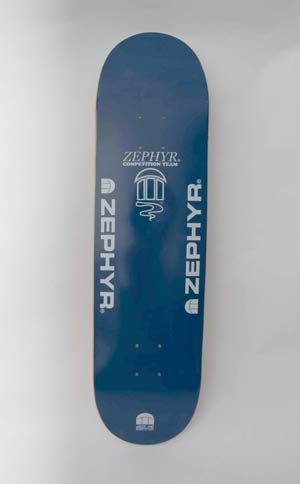 Okay so now my increasingly bad intro reads: “Engblom would coach them and insisted on high performance and good style. Bicknell Hill at Santa Monica beach was the main practice area for the team.”
Okay so now my increasingly bad intro reads: “Engblom would coach them and insisted on high performance and good style. Bicknell Hill at Santa Monica beach was the main practice area for the team.”
No.
No?
Okay… what happens is.. Skip used to sit inside the shop. I used to bring these guys out here in this parking lot, right here, and we used to have team meetings. I’d ask them to practice and show me their new trick. Anybody who runs a skate team knows the guys you have on the team have to practice. They have to learn new tricks, otherwise what’s the point? They’re supposed to be promoting the brand. Even today team managers are asking their guys: “Well are you learning new tricks?” And their job is to learn new tricks, and to become better and to win.
We used to practice here in the parking lot behind the old surf shop and also in the parking lot of Star Liquors. They had more pavement across the street. We also practiced in the middle of Bay Street. And the downhill slalom courses· we used to run at Bicknell.
At night? Can’t see you putting slalom cones on Bicknell in the modern world. You’d have the SWAT team on you.
No, we would just do it during the day. Wednesday was our team meeting day. Team practice. There’s a lot of misconceptions about the team, you know.
The Zephyr team.
The team was a surf team in the beginning. Nobody was doing any skate contests. Skateboards were used as transportation.
There was no organization.
There were no organized functions. You asked who should be included in this book. You’ve gotta go to Bill Bahne, you know. He did fin boxes and he did fins. I used to go down there and buy fins and boxes from him.
We took portraits of him in Encinitas and I think he has been in that one spot all along.
Down to Encinitas. He’s got a factory down there. He’s still down there. Still doing fins. He came up TO LA? and got a bunch of material and he came up with the fiberglass skateboard. And so they started using the extruded glass and the Chicago trucks and they got the wheels from Frank Nasworthy and that’s really how the whole situation started.
Bill Bahne.
I’m giving Bill Bahne the credit. He’s the guy who kind of major league started this – the distribution of the urethane wheel to more of a mainstream thing.
One day I go down there to pick up some fins. Bill shows me a skateboard and says “Hey you know check this thing out.” So I rode one and I said “Well give me a couple of those and I’ll take them up to the shop and see how you go.”
What year do you think this is?
I can’t remember. It was in the Seventies, you know. He was using the Cadillac Wheels. We brought the wheels up here, and then it was on. They started having skateboard contests, and Jay Adams was the first to go to some of the skateboard contests because his folks took him. He was on the surf team.
Yeah, the Zephyr/Jeff Ho Surf Team. He was riding for me. I’ve known Jay since he was a little grom. One of the first times I met him he paddled up to me in the water and he goes “Are you Jeff Ho?”· And I go “Yeah, who are you?” And he says, “I’m Jay Adams.” And he’s riding this really little board and he goes, “Yeah my dad works for Dave Sweet.” I said, “Dude, all right.”
So as the years went by I got to know him and put him on the surf team. And you’ve gotta give it to Jay Adams. He was one of the first guys to go skate contests. So we started sponsoring some of the guys that surfed and getting them to the skate contests.
When I talk to others about the Bahne-Cadillac contest in 1975, you will hear some rather loud raspberries about the way that contest was painted – and the Z Boys influence there.
Well it was a pinnacle deal. During that time period in ’74 and ’75 when the transition was taking place more skateboard contests started showing up at these fairgrounds: Orange County, Ventura and then they did Del Mar. Again, Bill Bahne was responsible for that. Sponsoring that contest. He put that contest up. The Bahne/Cadillac.
A lot of people don’t give Bill credit. He was responsible for a lot.
Tony Hawk’s first board was a Bahne. He’s one of those guys who has an engineering background and he has always been an innovator and trying to innovate something for the surfboard.
Okay we were talking about the Del Mar Nationals. This is what I wrote:· “This was the first major skateboard contest since the original skateboard heydays of the mid 1960’s. Jay Adams was the first and the youngest to compete and then the rest of the Dirty Dozen backed him up. At the end of the competition, half of the finalists were members of the Z-BOY crew. The results were: Women’s: Oki 1st, Junior Freestyle: Adams 3rd, Alva 4th, Junior Slalom: Harney 2nd, Pratt 4th. The older skateboard establishment was not ready for the aggressive surf style and free spirited approach that the Z-Boys exhibited and could not comprehend that they had just witnessed a revolution. The popularity of the Z-Boy style with vertical and airborne moves would sweep around the world.”
Okay what’s also wrong is we’re leaving Tony Alva out of this. Tony Alva was an integral part of the surf/skate movement. He was a little bit older than Jay and he had the drive. He had the edge and he was really highly self-motivated.
He was just motivated and I don’t know whether it was money or pride or what, you know? He was just self-motivated. He wanted to be good at something and I guess skateboarding was it – one of his tickets. He was a good surfer back then and he did win contests and stuff.
Jay flowed. Jay could flow and he had some natural ability but Tony took it up a notch because he had that edge – the motivation or drive to become better or the best in the world.
Yes I read that a lot about Tony and when you read the results in all the skateboard contests in the 1970s, he was up there like Kobe. Always at or near #1.
He was always doing stuff and getting his board to go faster and doing big big maneuvers. So it was no question that he was going to be one of the best in the world, whether it be speed-skating downhill, going the fastest or launching the biggest air. Tony’s just got this mad dog… Tony the mad dog. That is how he gets his nickname.
He was just so explosive when he skated. It wasn’t like he did some tricky move or whatever, a little pirouette. Whenever Tony did something it was always bigger and faster than everybody else.
Let’s see here. Baloney baloney baloney. But then it goes: “Jeff Ho still shapes surfboards and makes skateboards from his warehouse in Santa Monica.”
I’m inland, but call it like Venice.
I thought this was Venice?
I’m not doing them here. I have another place. Well kind of Venice/Marina Del Rey. Right in that unincorporated area.
Okay so now it gets into the bad interview we did before. I ask: “Why Zephyr?” And you say, “Why Zephyr? Zephyr is the god of the west wind. It comes from Greek mythology, ya know? Greek mythology and the symbol of the waxing crescent moon.”
Waxing crescent moon.
I asked: “What is the oldest board here?” and you said, “This is that one, the Revere one.· This skated Paul Revere Junior High, back in the day, in the sixties, when I was a kid. I was a skater before I was a surfer.” But that is not your first skateboard?
No. My first was custom made and had Metal wheels.
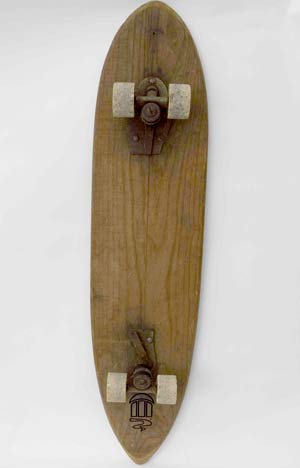 Just a chunk of wood with metal wheels?
Just a chunk of wood with metal wheels?
A little flat piece of two by four or one by six. Some of the boards back then were a little wider. I had that with Chicago skate metal wheels. When I was a kid I was small, and I used to bomb a hill at Hauser and Pico. When I look at it now, it’s a little bump. But when I was a kid, on metal wheels, that was the fastest, biggest hill I knew of. We also used to bomb Tuller Hill in Culver City.
And then I say, “I want to know what genius put that perfect terrain at a junior high school in Los Angeles.” And you say: “I don’t know dude. Paul Revere has been around for decades. It was there before we found it and it was virgin, ya know?” So what about Paul Revere. People were there before you, do you think?
I don’t really know who was the first person to skate it. The Hiltons and that group used to skate it, and we found it in the 1960s. But we called it Ranch Road, because old Ranch Road comes right down from Benedict Canyon right into where the baseball field used to be. It’s like a wave. I just know that I skated with a bunch of guys and we used to go up there and climb the fence on Saturdays and we’d go.
Was this the 50s?
It had to be the 60s. The early to mid-60s.· With Chris Dawson. You see, here’s another thing they don’t talk about: Chris Dawson.
Chris Dawson taught Stacy Peralta how to do these 360s and the moves that made Stacy famous! The nose 360 and the tail 360. Those were all moves that Chris Dawson did when he was on the Hobie team, back in the 60s. We brought some of that 60s influence into the 70s. But there’s no mention of Chris Dawson anywhere.
Well he gets some credit in this book. I interview him during what I call The Dark Ages, between 1965 to urethane.
Well that’s good.
So this wood board was your Paul Revere Special?
These are the Hobie Super Surfer wheels. I put these on in about 1968. I got them from Jay Stone and he must have got them from Hobie Vita-Pakt. This was probably the last set of wheels I had on this. There’s probably been about five sets of wheels on this board.
Now what about this board? I remember these boards from the 1970s. If the material polypropylene?
This board here was put together and made in this shop and I screened it in the shop down at the end of the street. And there’s probably about twenty of these made. This one had the um, color coat on top of it.
It’s fruity. Makes me want to lick it like that Willy Wonka wallpaper. This is like an old crap one I had laying around. The big long one is an old one. They’re all old. Oh, that one is a template from the seventies.
That one, the blue one is like the competition team logo, and all that. That’s a team board. This board has a 70s outline as well. I had many surfboards that had that outline.That was like…and these are templates back from the late seventies when boards were starting to evolve.
Now, these are like…I found these when I was just looking around but these are some of my templates… this is from seventy-eight. And then these are, I don’t know…ones a narrow tail, this one’s a wide tail. Ya know, they’re kinda…this ones a thirty-two, ten-and-a half. This one was six-nine, seventy-eight. Yeah, so these are some old templates and stuff.
…These ones are likes classics from the period. This is like a hand-painted one. This one has been in storage since eighty-five or eight-six. What year is it? Over twenty years.· And this one, so that’s how mint condition that one is, in the original wrapper and stuff. I did that one when I was up in West LA. This one here is something. This is an original board from seventy-five and this was a different process from some of the other ones. This is one of the boards that we hand-screened. Ya know? So there’s probably only like twenty of these.
Story By Ben Marcus from The Good The Rad and the Gnarly
Photos by Lucia Griggi

